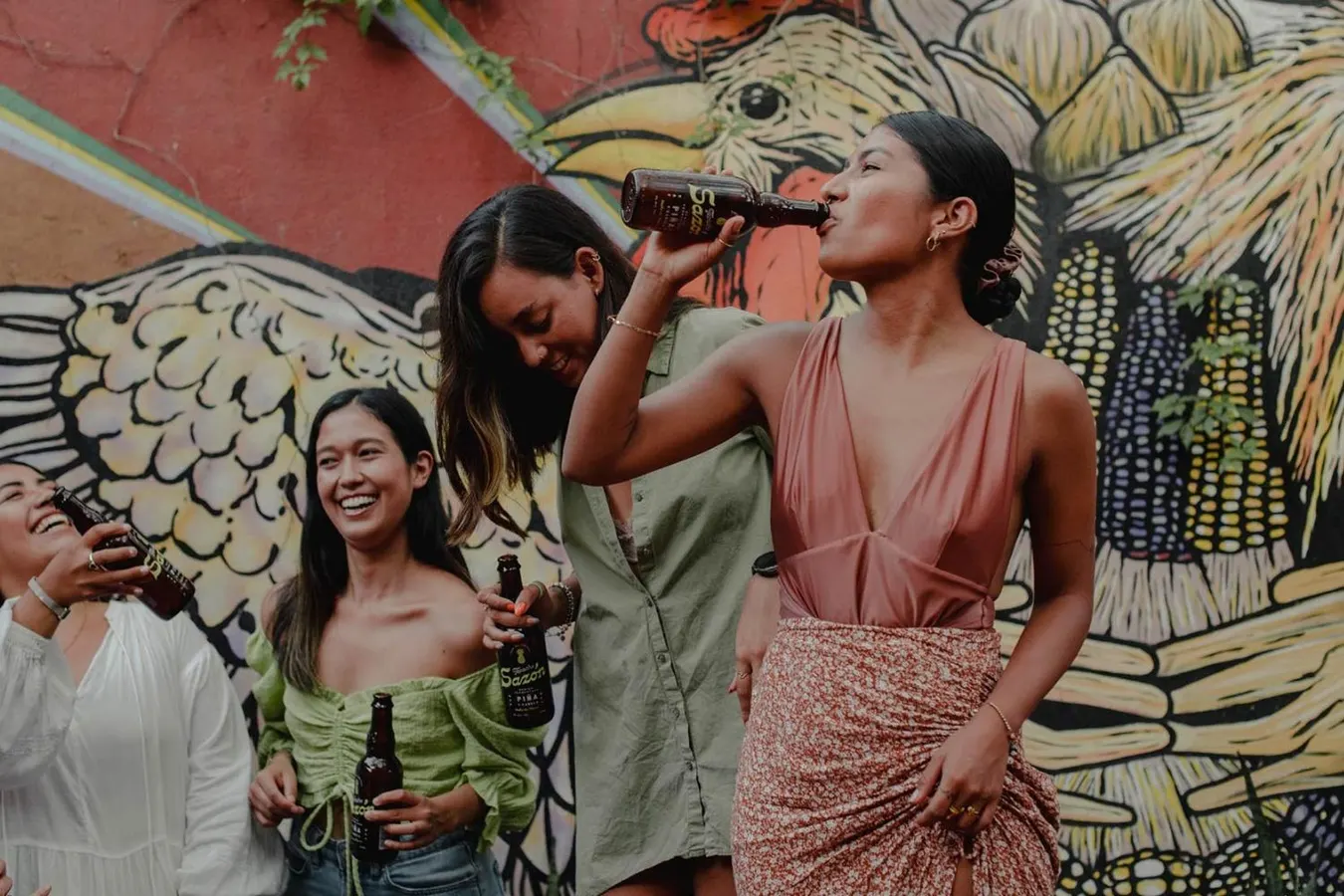By Carley Rojas Ávila,Contributor
Copyright forbes

Fermented pineapple is behind the fruity freshness of tepache, a beloved if lesser-known Mexican spirit now available in U.S. markets from Tepache Sazón.
Tepache Sazón
Some of the world’s most recognizable drinks find their origins in Latin America. Rum, from the islands of the Caribbean ripe with sugar cane, mezcal and tequila, from the elegant blue agaves towering over the landscape in Jalisco and Oaxaca, and that’s just the start.
The ancient roots of Latin America’s most beloved beverages run deep, but the modern spirits industry owes much more to Latin America and its people than just history. Now, brands founded and fed by Latinx leaders are among some of the industry’s most revolutionary, harkening back to tradition and creating cutting edge new techniques, many simultaneously.
This Hispanic Heritage Month, its time to toast both the well-established Latinx-led heritage brands and the cool, new innovators just emerging into the U.S. market. To that we say: salud.
Tepache Sazón
Tepache Sazón
Tepache Sazón
A traditional Mexican fermented beverage with ancient roots, tepache is still little known outside of Mexico despite its broad appeal. Australian-born Mexican Rio Chenery first tried the drink, traditionally made from pineapple, a raw cane sugar called piloncillo, and a mix of spices, when he moved home to Jalisco to open a raicilla distillery. It was then that the distillery’s night watchman, Margarito Alvarez, shared his family recipe for tepache and Tepache Sazón was born.
I first tried Tepache Sazón at Daniela Soto-Innes’ new restaurant Rubra in Mexico’s Riviera Nayarit, located just a few miles down the coast from the pineapple fields near San Pancho where the brand works its magic. To my delight, the brand now gets impressive distribution across the United States, leading the way in exposing the U.S. market to the delights of tepache. Light and effervescent, a perfect mix of tart and sweet, Tepache Sazón is an ideal way to toast the end of summer.
Though the Casa Natima team comes from a fourth-generation family of agave growers, Laelia is its very first independent brand, a dream come true after years of work and perfecting the craft. Inspired by orchids, ceremonial flowers used by the native Nahua people, Laelia is produced in Amatitán, Jalisco by Master Distiller Carlos R. Huízar and founder Fernando Pérez Ontiveros.
Laelia launches with just two expressions, Laelia Blanco and Laelia Reposado, both handcrafted with 100% Blue Weber agave. While Laelia Blanco has an earthier, lighter taste and finish, Laelia Reposado has a much deeper taste with notes of toasted caramel and fruit, and an intriguing minerality from the French white oak barrels in which it is aged.
Ron del Barrilito
Ron del Barrilito
Ron del Barrilito
Founded in Bayamón in 1880, Ron del Barrilito is Puerto Rico’s oldest rum distillery, with a family-led ethos and island-first focus that endures nearly 150 years later. Don Pedro Fernández’s original formulation, crafted at his family’s Hacienda Santa Ana, lives on unaltered in the brand’s most popular Three Stars rum.
Ron del Barrilito uses certified oloroso sherry casks to imbue its small batch rums with rich, smoky notes, aging its Three Stars rum for 6-10 years to achieve maximum smoothness. While even just the Three Stars is a wonderful sipping rum to be enjoyed neat, the extremely limited edition Five Stars is next level, with strong notes of vanilla, caramelized sugar, and a woody finish that comes from at least 35 years of aging. Try them all at Hacienda Santa Ana, located just 15 minutes outside of San Juan, or find Ron del Barrilito in many liquor stores across the continental United States.
Casa Dragones
Casa Dragones
Casa Dragones
Tequila may have always been a man’s game, but Casa Dragones cofounder and CEO Bertha González Nieves is rewriting the rulebook entirely. Known as the “First Lady” of tequila, González Nieves became the first female “Maestra Tequilera” (master tequila distiller) to be certified by the Academia Mexicana de Catadores de Tequila.
The brand first launched with its joven expression, rather than a traditional blanco, showing off vegetal agave and floral notes only achieved with age. Casa Dragones also created the first ever tequila to be rested in rare Japanese Mizunara whisky casks, creating the brand’s beloved Reposado Mizunara, known for its fruity and butterscotch notes.
The brand is based in historic San Miguel de Allende, home to La Casa Dragones distillery and tasting room, and has a new tasting experience in Riviera Nayarit at W Punta de Mita in collaboration with Chef Daniela Soto-Innes.
Celebrity-backed spirits brands tend to get a bad rap, but Ozama feels different. Founded by three-time World Series Champion and Hall of Famer David “Big Papi” Ortiz, Ozama is a proudly Dominican rum honoring Ortiz’s homeland and heritage in a big way.
For Ortiz, this isn’t just business: it’s personal. Ozama is named after the Ozama River where Ortiz spent his childhood crabbing, a detail that makes it into the brand’s logo. Now, the brand is bringing opportunity to the area, while using 97% green energy in its production and donating part of its profits to fund the cleanup of the river after which it is named.
Ozama launched its first three expressions—blanco, añejo, and gran añejo—in June, with more to come next year. While Ozama’s Blanco is perfect for elevated mixed drinks, the Añejo and Gran Añejo are great for sipping, with deep notes. Gran Añejo in particular has a sweet fruitiness, caramel, and spice that make it easy drinking.
It’s an exciting time for small-batch, handcrafted mezcal and tequila brands hitting the market for the first time. Among them is Calenda, created by brothers Diego and Javier Mayagoitia and their father, Francisco Javier, in Oaxaca. Made with a mix of Espadín and Mexicano agave, it’s imbued with soft, smoky flavors yet a bold character that is sure to make it a brand worth watching.
Calenda still has limited distribution in the States, but is available at a handful of shops on both the East and West coasts. I was lucky enough to find a bottle at Tahona Mercado, a Latinx-owned “Mexicatessen” market and bottle shop in San Francisco that has an impressive collection of spirits and products from south of the border.
Created under the watchful eye of Lorena Vásquez, one of the few female master blenders in the business, Zacapa is a Guatemalan rum brand known for a unique blending and distilling process that sets it apart from the rest. Zacapa is produced in Guatemala’s highly volcanic Quetzaltenango highlands, where higher altitudes help create more breathable barrels ideal for Zacapa’s Sistema Solera aging process. The process starts with just-pressed sugarcane juice, whereas most other rums that start from molasses, and uses barrels that once held sherry and whiskey for a distinct flavor.
Zacapa has strong distribution across Latin America and the United States, helping it become one of the best-selling rums in the world. Its Zacapa XO is particularly popular, a mix of rums aged between 10 to 25 years for a balanced, smooth finish with a mix of sweet and fruity flavors and just a taste of cinnamon and spice.
Handcrafted in a small distillery in Jalisco’s Valle de Guadalupe, La Gritona is a proudly female-founded brand created by Melly Barajas Cardenas and her incredible all-female team. La Gritona has just one expression, perfected to an art form with agave aged 8-10 years in the highlands of Jalisco. Barajas steers away from newer methods like using a diffuser or autoclave in her process and uses American whiskey barrels for the product’s 6-month resting process.
La Gritona is proudly additive-free and always prioritizes sustainability, turning over its agave remnants to local farmers for cattle feed. The brand’s bottles, which come in standard 750 ml sizes all the way down to cool 50 ml shot-sized portions, are blown by Mexico City’s Pavisa Glass using 100% recycled glass.
Puerto Rico produces well over 70% of all the rum consumed in the United States, but the number one selling brand on the island itself is Don Q. Named after the protagonist of Miguel Cervantes’ classic novel Don Quijote, Don Q was created in Ponce in 1932 by Don Juan Serrallés, whose familial rum-making legacy stretches back even further.
Don Q’s most popular bottle is the Don Q Reserva 7, aged for seven years in American white oak barrels. It is a great pick either for cocktails or for drinking neat, with its medium body and warm vanilla flavors making it exceedingly popular. Don Q is also well known for its flavored rums, like the passionfruit-flavored Don Q Pasión, and Don Q Coco, ideal for adding an extra coconut kick to piña coladas.
El Tequileño
El Tequileño
El Tequileño
As a tequila maker in Mexico, it’s hard to chart your own path with a last name like Cuervo. So in 1959, Don Jorge Salles Cuervo decided to leave his legendary family tequila lineage behind to create his own brand: El Tequileño. Now overseen by third-generation master distiller Juan Antonio Salles, El Tequileño is still a family-run business at heart, with “Tony” still using his grandfather’s original formulation 65 years later.
Mineral-rich waters that spring from the nearby Volcán de Tequila run directly through El Tequileño’s distillery and play an irreplaceable role in the brand’s smooth expressions. El Tequileño now has a cult following in Mexico and an impressive distribution in the United States, producing eight different types of tequila. Of particular note is the world’s only Reposado Rare, award-winning, additive-free and aged more than six years in oversized American oak pipons.
Editorial StandardsReprints & Permissions



